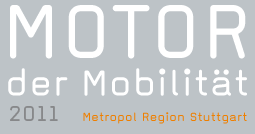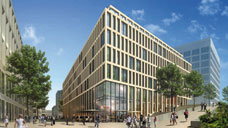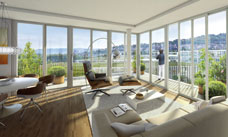Stuttgart is green at heart
Stuttgart is Germany’s greenest city. You can walk right from the centre to the outskirts through an eight kilometre green belt. Named the “Green U”, it is a connecting park landscape of lakes, streams and green areas. The entire area is larger than the Englische Garten in Munich or Central Park in New York. So most city dwellers are less than two kilometres away from nature.
At the same time, the Stuttgart region is actively engaged in urban development. As early as 1955, Germany's first pedestrian precinct was inaugurated in Stuttgart.
Thanks to the Stuttgart–Ulm railway project, the state capital now has an opportunity to achieve future-focused urban development. The project will free up around 100 hectares of former railway tracks in the city centre. Living and working will account for 50 of these, 20 will be devoted to extending the green belt and 30 for public squares, streets and green spaces.
Creating new districts
The “Europa District”, once a goods and shunting yard, is one of Germany’s most important inner city developments. The central rail station, Koenigstrasse shopping mile and the green belt of the Schlossgarten are all within a radius of 500 metres. The library will be its cultural centre.
The new “Rosenstein” district offers an historic opportunity. The railway has sold the railway tracks built around 100 years ago back to the city. 200,000 s. qm. of this area is to be turned into parks while around the historic Nordbahnhof district new buildings are to enhance existing properties covering an area of 60 hectares.
- Potential for urban development –>
- On-trend: living, working and lifestyle in the city centre –>
- Landmark projects in the cityscape –>
- His achievements made him a credit to the city of his birth –>
- Stuttgart-Wangen office campus –>










 download .pdf
(626 KB)
download .pdf
(626 KB)